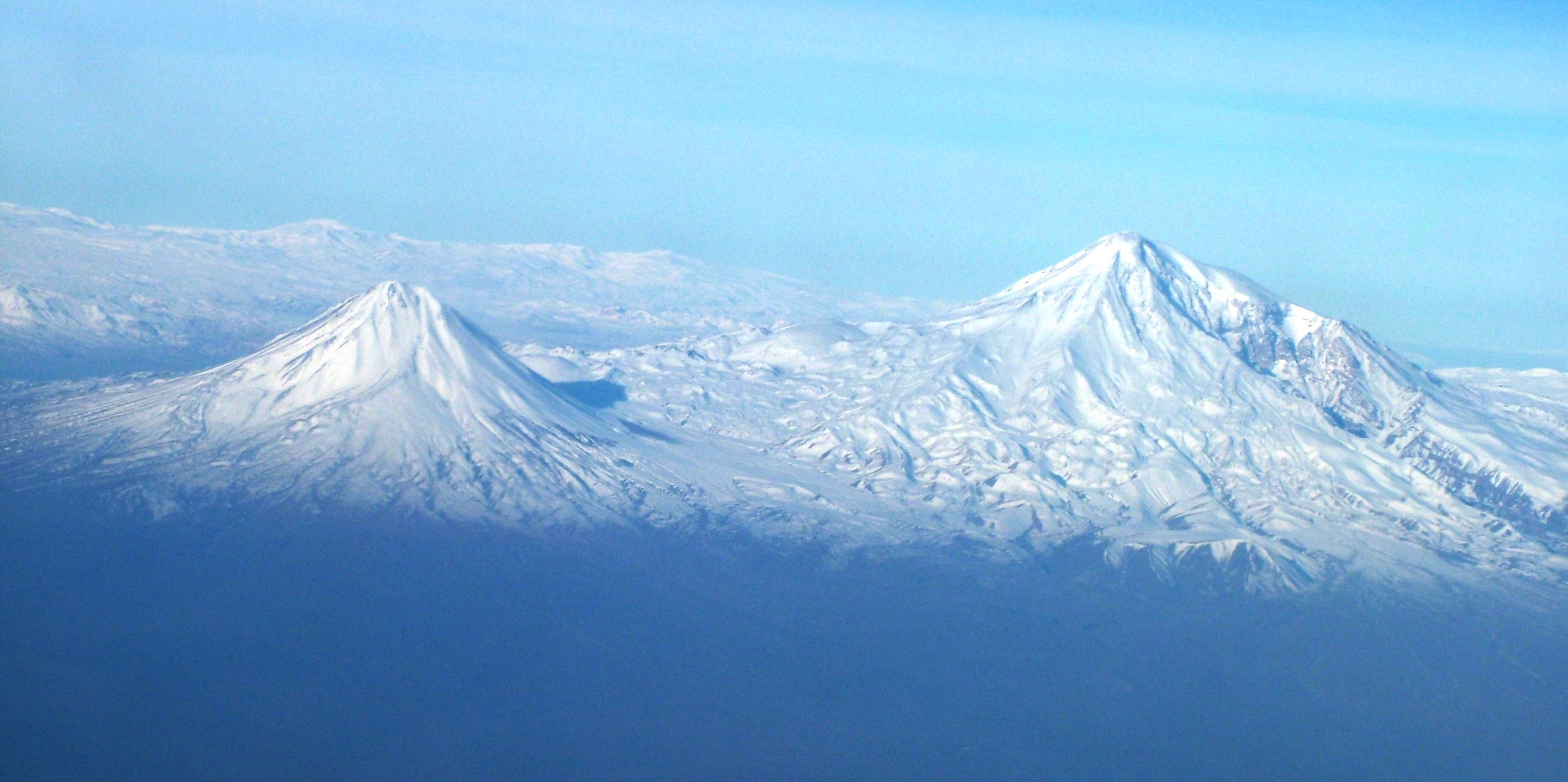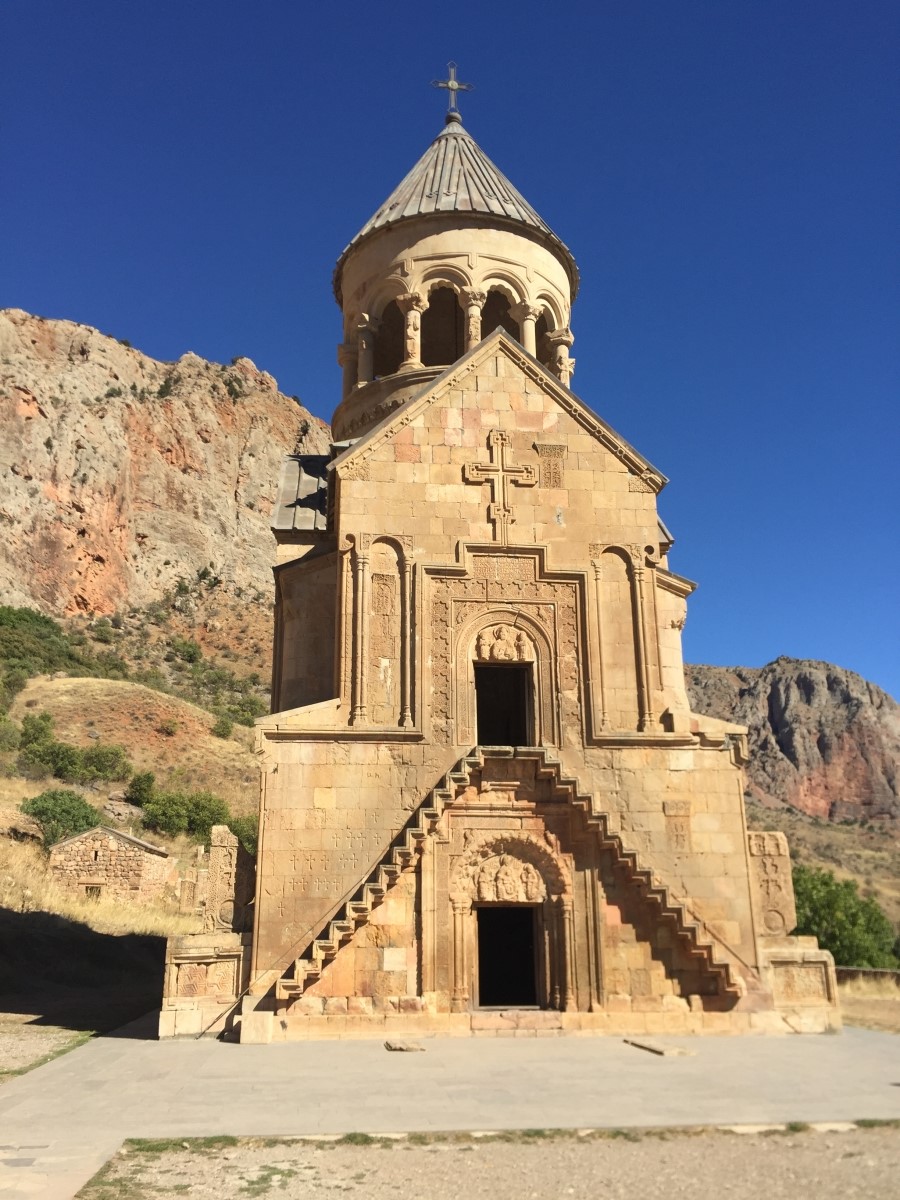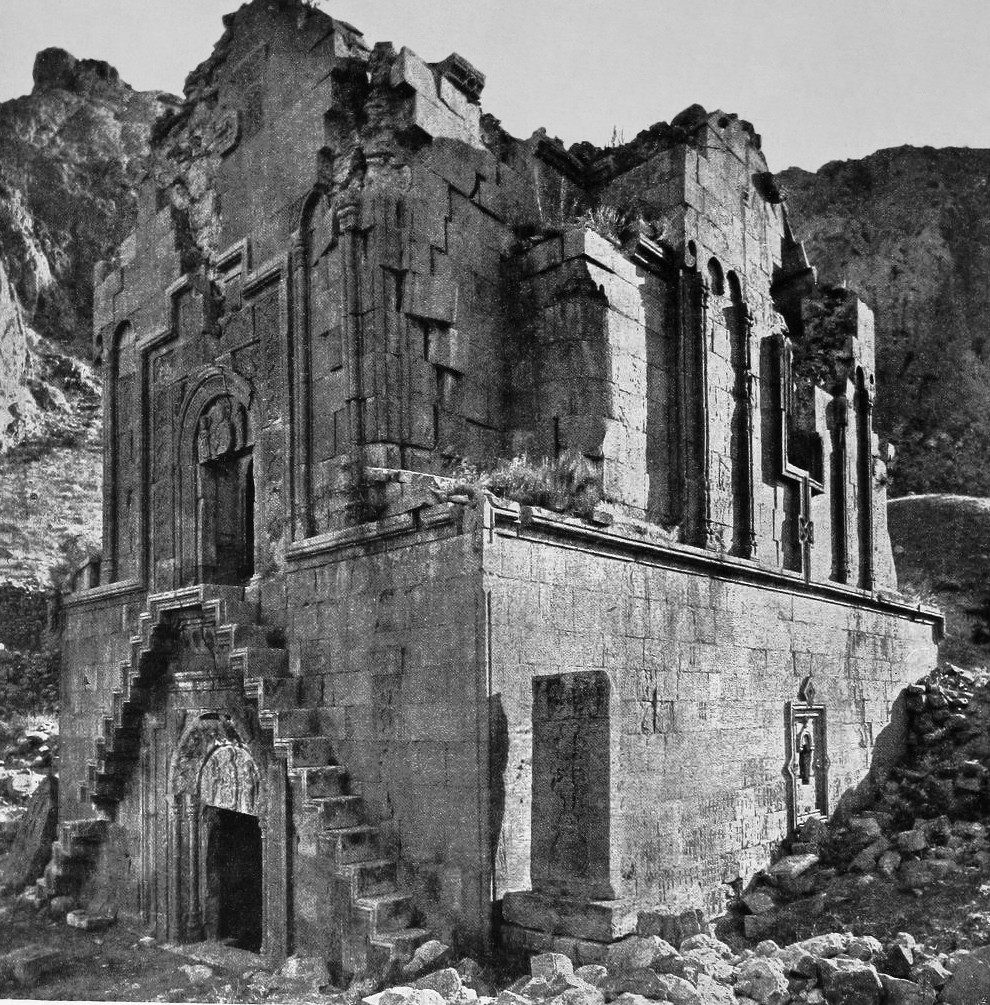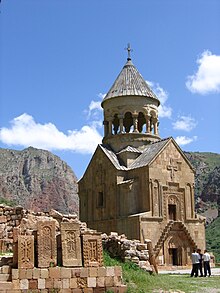Return
|
Ref ID: 1AR2016/1093 | Posted On: 17-11-2016 | Updated on: 17-11-2016
|
|
Noravank Monastery
Noravank (Armenian: Նորավանք, literally "new monastery") is a 13th-century Armenian monastery, located 122 km from Yerevan in a narrow gorge made by the Amaghu River, near the town of Yeghegnadzor, Armenia. The gorge is known for its tall, sheer, brick-red cliffs, directly across from the monastery. The monastery is best known for its two-storey Surb Astvatsatsin (Holy Mother of God) church, which grants access to the second floor by way of a narrow stone-made staircase jutting out from the face of building.
The monastery is sometimes called Noravank at Amaghu, with Amaghu being the name of a small and nowadays abandoned village above the canyon, in order to distinguish it from Bgheno-Noravank, near Goris. In the 13th–14th centuries the monastery became a residence of Syunik's bishops and, consequently. a major religious and, later, cultural center of Armenia closely connected with many of the local seats of learning, especially with Gladzor's famed university and library.
| Noravank | |
|---|---|
 Surb Astvatsatsin and Surb Karapet Churches with Surb Grigor's Chapel to the right, Noravank |
|
| Basic information | |
| Location | Amaghu Valley, Vayots Dzor Province, Armenia |
| Geographic coordinates | 39.684061°N 45.232872°ECoordinates: 39.684061°N 45.232872°E |
| Affiliation | Armenian Apostolic Church |
| Architectural description | |
| Architectural style | Armenian |
| Groundbreaking | 1205 |
History

The monastery in the early 20th century
Noravank was founded in 1205 by Bishop Hovhannes, a former abbot of Vahanavank near the present-day city of Kapan in Syunik. The monastic complex includes the church of S. Karapet, S. Grigor chapel with a vaulted hall, and the church of S. Astvatsatsin (Holy Mother of God). Ruins of various civil buildings and khachkars are found both inside and outside of the compound walls. Noravank was the residence of the Orbelian princes. The architect Siranes and the miniature painter and sculptor Momik worked here in the latter part of the thirteenth and early fourteenth century.
Noravank Complex
The fortress walls surrounding the complex were built in the 17th–18th centuries.
Surb Astvatsatsin Church

Surb Astvatsatsin, the façade

The backside wall of the Astvatsatsin church
S. Astvatsatsin Church of Noravank
The grandest structure is Surb Astvatsatsin (Holy Mother of God), also called Burtelashen (Burtel's construction) in the honour of Prince Burtel Orbelian, its financier. It is situated to the south-east of the Surb Karapet church. Surb Astvatsatsin was completed in 1339, a masterpiece of the talented sculptor and miniaturist Momik, who designed it, and was also his last work. Near the church there is his tomb khachkar, small and modestly decorated, dated the same year. In recent times the fallen roof had been covered with a plain hipped roof. In 1997 the drum and its conical roof was rebuilt, with the form based on existing fragments. The ground floor contained elaborate tombs of Burtel and his family. Narrow steps projecting from the west façade lead to the entrance into the church/oratory. There is fine relief sculpture over the entrance, depicting Christ flanked by Peter and Paul.
Burtelashen is a highly artistic monument reminiscent of the tower-like burial structures of the first years of Christianity in Armenia. It is a memorial church. Its ground floor, rectangular in plan, was a family burial vault; the floor above, cross-shaped in plan, was a memorial temple crowned with a multi-columned rotunda.
Burtelashen is the dominant structure in Noravank. The original three-tier composition of the building is based on the increasing height of the tiers and the combination of the heavy bottom with the divided middle and the semi-open top. Accordingly, decoration is more modest at the bottom and richer at the top. Employed as decorative elements are columns, small arches, profiled braces forming crosses of various shapes, medallions, interlaced banding around windows and doors.
The western portal is decorated with special splendour. An important role in its decoration is played by the cantilevered stairs that lead to the upper level, with profiled butts to the steps. The doorways are framed with broad rectangular plaitbands, with ledges in the upper part, with columns, fillets and strips of various, mostly geometrical, fine and intricate patterns. Between the outer plathand and the arched framing of the openings there are representations of doves and sirens with women's crowned heads. Such reliefs were widely used in fourteenth-century Armenian art and in earlier times in architecture, miniatures and works of applied art, on various vessels and bowls. The entrance tympanums are decorated with bas-reliefs showing, on the lower tympanium, the Holy Virgin with the Child and Archangels Gabriel and Michael at her sides, and, on the upper tympanium, a half-length representation of Christ and figures of the Apostles Peter and Paul. As distinct from the reliefs of Noravank's vestry, these ones are carved on a plain surface, which gives them greater independence. The figures are distinguished by their plasticity of form, softness of modeling, and accentuation of certain details of clothing.
A group of the founders of Burtelashen is depicted on three columns of the western part of its rotunda. The picture consisted of relief figures of the Holy Virgin with the Child, sitting on a throne, and two standing men in rich attire, one of them holding a model of the temple.
Surb Karapet Church

Surb Karapet (St. John the Baptist) Church

The façade of Surb Karapet Church with a striking depiction of God the Father (upper relief)
The second church is the Surb Karapet, a cross within square design with restored drum and dome built in 1216–1227, just North of the ruins of the original Surb Karapet, destroyed in an earthquake. The church was built by the decree of Prince Liparit Orbelian.
In 1340 an earthquake destroyed the dome of the church which in 1361 was reconstructed by the architect Siranes. In 1931 the dome was damaged during another earthquake. In 1949, the roof and the walls of the church were repaired and finally completely renovated in 1998 with the aid of an Armenian-Canadian family.
Forming the western antechamber is an impressive gavit of 1261, decorated with splendid khachkars and with a series of inscribed gravestones in the floor. Note the famous carvings over the outside lintel. The church houses Prince Smbat Orbelian's mausoleum. The gavit was probably a four-pillar one. In 1321 the building, probably destroyed by an earthquake, was covered with a new roof in the shape of an enormous stone tent with horizontal divisions, imitating the wooden roof of the hazarashen—type peasant home. This made the structure quite different from other Armenian monuments of the same kind. The ceiling has four rows of brackets forming stalactite vaulting with a square lighting aperture at the top. A broad protruding girth over the half-columns, the deep niches with khachkars and the low tent-like ceiling almost devoid of decoration give the dimly lit interior a gloomy look.
The exterior decoration focus' mainly on the western facade where the entrance to the building is. Framed in two rows of trefoils and an inscription, the semi-circular tympanum of the door is filled with an ornament and with a representation of the Holy Virgin seated on a rug with the Child and flanked by two saints. The ornament also has large letters interlaced by shoots with leaves and flowers. The Holy Virgin is sitting in the Oriental way with Child. The pattern of the rug is visible with drooping tassels. In Syunik temples of the thirteenth-fourteenth centuries the cult of the Holy Virgin was widely spread. She was depicted in relief, and many churches were dedicated to her.
The pointed tympanum of the twin window over the door is decorated with a unique relief representation of the large-headed and bearded God the Father with large almond shaped eyes blessing the Crucifix with his right hand and holding in his left hand the head of Adam, with a dove — the Holy Spirit — above it. In the right corner of the tympanum there is a seraph dove; the space between it and the figure of the Father is filled with an inscription.
Surb Grigor Chapel

Grave of Elikum III Orbelian, son of Prince Tarsaich Orbelian
The side chapel of Surb (Saint) Grigor was added by the architect Siranes to the northern wall of Surb Karapet church in 1275. The chapel contains more Orbelian family tombs, including a splendid carved lion/human tombstone dated 1300, covering the grave of Elikum son of Prince Tarsayich Orbelian. The modest structure has a rectangular plan, with a semi-circular altar and a vaulted ceiling on a wall arch. The entrance with an arched tympanum is decorated with columns, and the altar apse is flanked with khachkars and representations of doves in relief.
Khachkars
The complex has several surviving khachkars. The most intricate of them all is a 1308 khachkar by Momik. Standing out against the carved background are a large cross over a shield-shaped rosette and salient eight-pointed stars vertically arranged on its sides. The top of the khachkar shows a Deesis scene framed in cinquefoil arches symbolizing a pergola as suggested by the background ornament of flowers, fruit and vine leaves.
Sources
- "Architectural Ensembles of Armenia", by O. Khalpakhchian, published in Moscow by Iskusstvo Publishers in 1980.
- "Rediscovering Armenia Guidebook", by Brady Kiesling and Raffi Kojian, published online and printed in 2005.
Gallery







